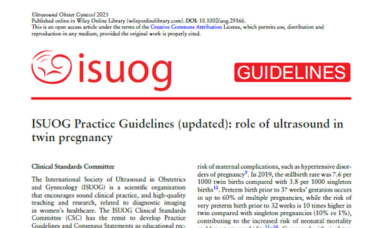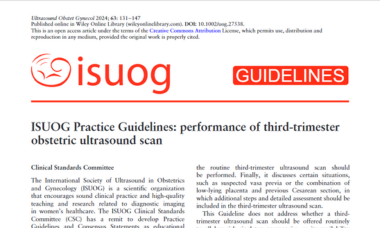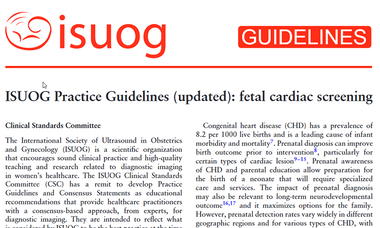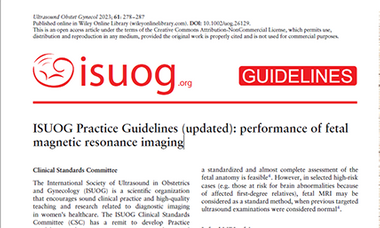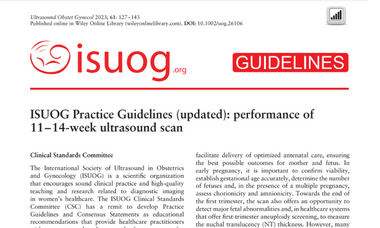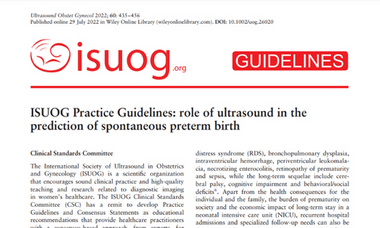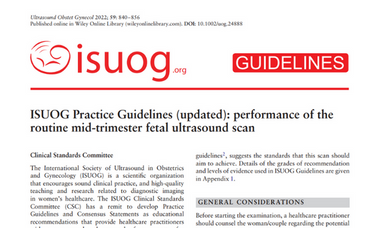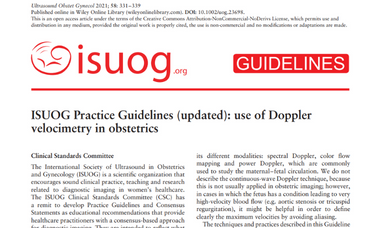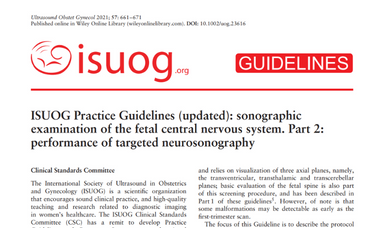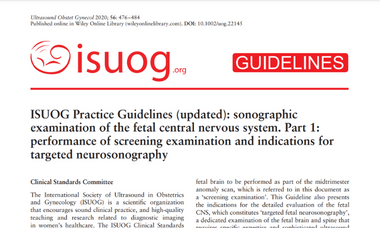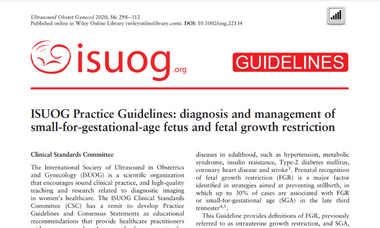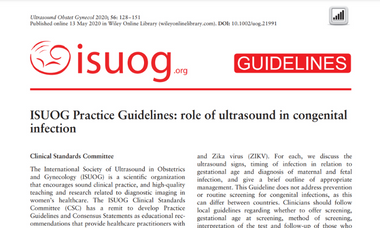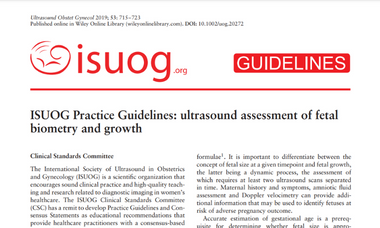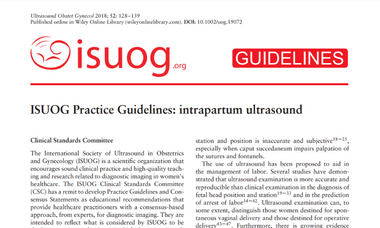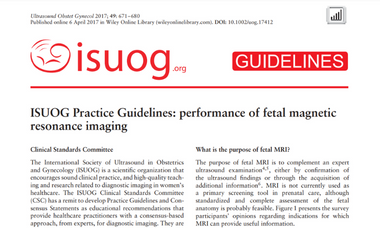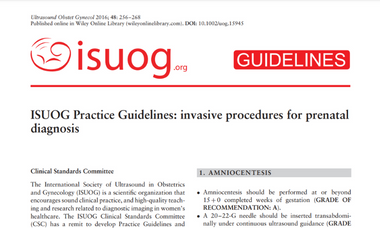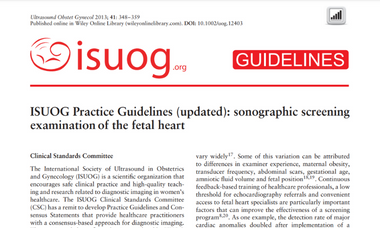Updated ISUOG Practice Guidelines: role of ultrasound in twin pregnancy
This guidance will address the role of ultrasound in the care of uncomplicated twin pregnancies and those complicated by TTTS, selective FGR (sFGR), twin anemia–polycythemia sequence (TAPS), twin reversed arterial perfusion (TRAP) sequence, conjoined twins and single intrauterine death (IUD).
ISUOG Practice Guidelines: performance of third-trimester obstetric ultrasound scan
This document outlines recommended guidelines for conducting third-trimester ultrasound examination, encompassing determination of placental location and fetal presentation, measurement of fetal biometry, identification of fetal anomalies, evaluation of amniotic fluid volume and documentation of fetal and uterine artery Doppler findings.
Updated ISUOG Practice Guidelines: fetal cardiac screening
This document provides recommendations for low-risk fetal cardiac ultrasound screening during the second trimester, updated from previously published Guidelines.
Updated ISUOG Practice Guidelines: performance of fetal magnetic resonance imaging
The aim of this document is to provide information and guidelines on fetal MRI procedures for those performing the examination, as well as for clinicians interpreting the results of the examination.
Updated ISUOG Practice Guidelines: Performance of 11-14- week ultrasound scan
This document aims to provide guidance for healthcare practitioners performing, or planning to perform, pregnancy scans at 11 + 0 to 14 + 0 weeks.
Role of ultrasound in the prediction of spontaneous preterm birth
The scope of this Guideline is to evaluate the role of ultrasound in the prediction of preterm birth in asymptomatic women and women with symptoms of preterm labor, with the goal of preventing prematurity and improving the perinatal and long-term outcome of the infant.
Performance of the routine mid-trimester fetal ultrasound scan
The mid-trimester ultrasound scan is performed mainly for anatomical evaluation of the fetus. In experts’ hands, most clinically important structural anomalies can be detected.
Use of Doppler velocimetry in obstetrics
This is a Practice Guideline on how to perform Doppler ultrasonography of the fetoplacental circulation. The aim is to describe pulsed Doppler ultrasound and its different modalities: spectral Doppler, color flow mapping and power Doppler, which are commonly used to study the maternal–fetal circulation.
Sonographic examination of the fetal central nervous system: part 2
The focus of this Guideline is to describe the protocol for the diagnostic ultrasound examination that should be performed in any case in which there is an increased risk of central nervous system (CNS) malformation.
Sonographic examination of the fetal central nervous system: part 1
These Guidelines review, describe and update the technical aspects of the screening evaluation of the fetal brain to be performed as part of the midtrimester anomaly scan.
Diagnosis and management of small-for-gestational-age fetus and fetal growth restriction
This Guideline provides definitions of FGR, previously referred to as intrauterine growth restriction, and SGA, and describes the best possible management options based on current data and knowledge
Role of ultrasound in congenital infection
In this Guideline we examine the role of ultrasound in the diagnosis and management of congenital infection, discussing the ultrasound signs and the prognostic value of ultrasound findings.
Ultrasound assessment of fetal biometry and growth
These Guidelines describe the appropriate assessment of fetal biometry and diagnosis of fetal growth disorders including fetal growth restriction, small-for-gestational age, and large-for-gestational age.
Role of ultrasound in screening for and follow-up of pre-eclampsia
The aim of these Guidelines is to review the latest evidence and, when possible, provide evidence-based recommendations regarding the role of ultrasound in screening and follow-up of PE.
Intrapartum ultrasound
The purpose of these Guidelines is to review the published techniques of ultrasound in labor and their practical applications.
Performance of fetal magnetic resonance imaging
These Guidelines provide information on the role of fetal MRI in relation to prenatal diagnostic ultrasound, for those performing the examination, as well as for clinicians interpreting the results.
Invasive procedures for prenatal diagnosis
This Guideline summarizes information regarding when, how, and why practitioners perform invasive procedures for prenatal diagnosis.
Sonographic screening examination of the fetal heart
These Guidelines can be used to maximize the detection of heart anomalies during a second-trimester examination as part of routine prenatal care.

